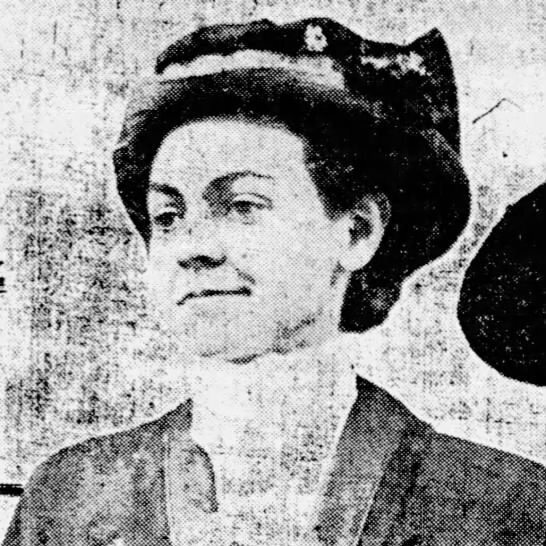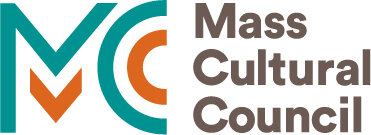Florence HOPE Luscomb (1887-1985)
Lifelong political and social activist Florence Luscomb was a leader in the women’s rights, civil rights and civil liberties movements in Massachusetts. Public art in the state house and modern feminists celebrate her long and well-documented career. Some of her most formative and active years were spent working as an artist, architect and suffragist in Waltham, where she was the youngest and most visible of the women’s suffrage activists.
Luscomb attended a talk by Susan B. Anthony at age 5. In college, while she was studying architecture at MIT, she began giving lectures and distributing literature for the College Equal Suffrage League, an organization created to help rescue the waning women’s suffrage movement with new youth, energy and professionalism.
Florence Luscomb practicing for an open-air speech at her home in Brighton. Schlesinger Library, Radcliffe Institute.
Just after graduation in 1909, Luscomb and her friends challenged convention that relegated women to the privacy of the home, by taking to the streets, boldly and creatively using open-air speeches, dramatic spectacle, and artistic talent to attract press coverage and draw public attention to their goal: full voting rights for women.
At around the same time, Luscomb gained more exposure in Boston as a “newsie” for the Woman’s Journal, standing outside subway stations wearing a carrier bag of bright suffrage yellow, emblazoned with the words “Votes for Women.” National suffrage leader and Woman’s Journal editor Alice Stone Blackwell confided in a letter to her, “As those of us who have been working for suffrage for years grow older and more tired, it is a great comfort to know that there are brave young women coming on to fill up the ranks.” (Strom, 74)
Beyond words of encouragement came financial support for this up-and-coming activist. Suffrage organizations paid for her travel abroad to attend an international suffrage convention and train in the more radical strategies of the English suffragists in the summer of 1911. Other national leaders who spent years immersed in the movement in England introduced these tactics to America with the first organized march on Washington for political purposes at President Wilson’s inauguration in March 1913. Luscomb and her mother marched in the famous 1913 Woman Suffrage Procession.
Shortly after Luscomb’s return from England, she joined the architectural firm of Waltham native and fellow MIT graduate Ida Annah Ryan. In Ryan, Luscomb found an enthusiastic ally, who readily gave her time off in the summer to work for women’s suffrage campaigns and who joined her in designing floats and banners for suffrage parades and rallies in Waltham.
Suffrage float, Waltham, Massachusetts, 1919. Waltham Historical Society.
The two practiced architecture in the Lawrence Block across from the common from 1912 to 1918 in one of the first female architectural firms in the country.
Luscomb continued to live with her mother in Brighton, remained active in Boston and across the state, and brought new life to the local suffrage movement in Waltham. Days after the Washington march, Luscomb and her local allies took over the Waltham Evening News for a day to release a special women’s edition. That summer she was a featured speaker at a suffrage rally on the common and went so far as to hijack the 4th of July celebration by draping women’s rights propaganda over the camel leading the circus parade. When English suffragettes made their well-publicized “hurdy gurdy” tour from Boston to Washington, she must have been the one to convince them to travel through Waltham en route.
In 1915 while working as an architect in Waltham, Luscomb designed one of the most famous works of “street art” in the women suffrage movement: the suffrage bluebird. 100,000 of these cheerful tin bluebirds were posted on telephone poles, barns, trees and shop windows across the state on Suffrage Bluebird Day, July 9, 1915. A symbol of happiness, with a blue sky always on its back, the bluebird spread a message of hope and optimism against great odds. Until author Barbara Berenson’s recent discovery, the famous suffrage bluebird went unattributed, a piece of now iconic ephemera designed by an anonymous artist with a flair for the spectacular and a passion for women’s rights and the outdoors.
War and patriarchy tested the hope and resilience of women’s rights activists. Frustrated by the lack of opportunity for professional women, Luscomb’s partner Ida Ryan moved her architectural practice to Florida in 1918. Luscomb meanwhile left the field of architecture to become a full time activist, beginning with paid positions in the Boston Equal Suffrage League and then, after the passage of the 19th Amendment in 1920, the Boston League of Women Voters.
A photo of Luscomb painting in the state of Tennessee on the “Ratification Map” records for posterity the moment the 19th Amendment to the US Constitution passed, ensuring that a citizen’s right to vote could not be denied or abridged on account of sex. Shortly after this landmark victory, she co-authored the Manual for Massachusetts Voters to help educate the newly doubled electorate.
Florence Luscomb (right) coloring in Tennessee on the women’s suffrage Ratification Map, 1919. Schlesinger Library, Radcliffe Institute.
Florence H. Luscomb and Ida Porter Boyer. Manual for Massachusetts Voters, Boston: College Equal Suffrage Association, 1920.
In 1920, at age 33, she was one of the most seasoned campaigners and organizers for women’s suffrage in the Commonwealth. Her work in Waltham, an early industrial city with over 3000 women working in the watch factory alone, must have helped shape her world view. In the 1970s she reminded modern feminists to include women of all classes and ethnicities in the second wave of the women’s movement.
Education: Chauncy Hall School; Massachusetts Institute of Technology, 1909
Waltham workplace: Lawrence Block, 677-685 Main St. (1912-1918), resided in Brighton, Mass.
References:
Allaback, Sarah. The First American Women Architects. University of Illinois Press, 2008.
Berenson, Barbara F., Massachusetts in the Woman Suffrage Movement. The History Press, 2018.
Cantarow, Ellen with Susan Gushee O’Malley and Sharon Hartman Strom, Moving the Mountain: Women Working for Social Change. The Feminist Press, 1980
Cresswell, Tim. “Mobilising the Movement: The role of mobility in the suffrage politics of Florence Luscomb and Margaret Foley, 1911-1915.” Gender Place and Culture, vol. 12, no. 4, (December 2005), 447-461.
Luscomb, Florence Hope Papers, Schlesinger Library, Radcliffe Institute, Cambridge, Mass.
Strom, Sharon Hartman. Political Woman: Florence Luscomb and the Legacy of Radical Reform. Temple University Press, 2001.
Stonehurst Curator Ann Clifford wrote this biographical sketch in conjunction with “Anxious to Vote: Students, Workers and the Fight for Women’s Suffrage,” a curriculum and public education project developed in partnership by Stonehurst the Robert Treat Paine Estate and Waltham Public Schools in commemoration of the national suffrage centennial in 2020. STONEHURST is a National Historic Landmark owned by the City of Waltham. The once-private estate of generous social justice advocates whose ancestors helped establish the democratic foundations of this country is now appropriately owned by the people.
The Friends of Stonehurst received support for this program through “The Vote: A Statewide Conversation about Voting Rights,” a special initiative of Mass Humanities that includes organizations around the state.
This program is funded in part by Mass Humanities, which receives support from the Massachusetts Cultural Council and is an affiliate of the National Endowment for the Humanities.










